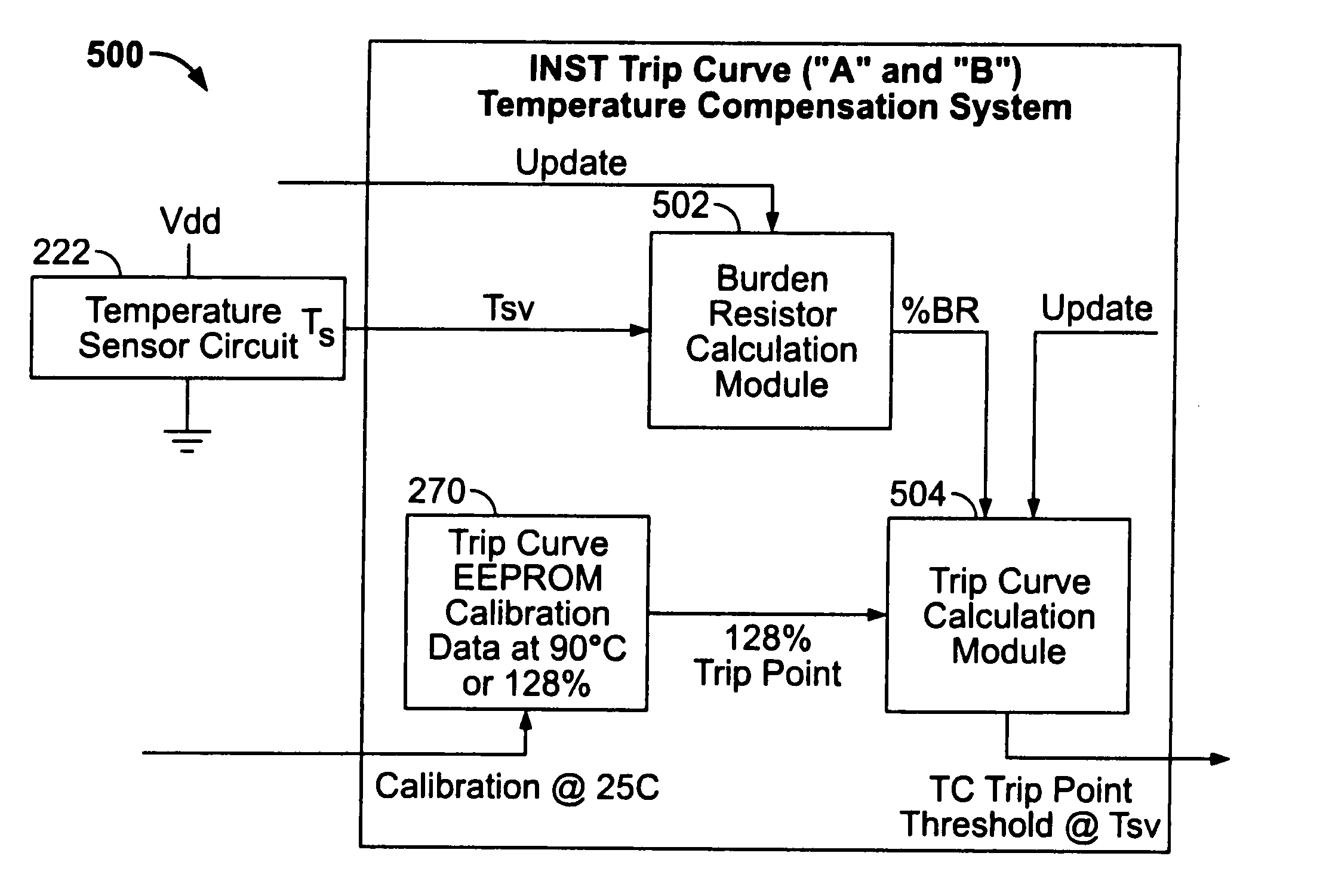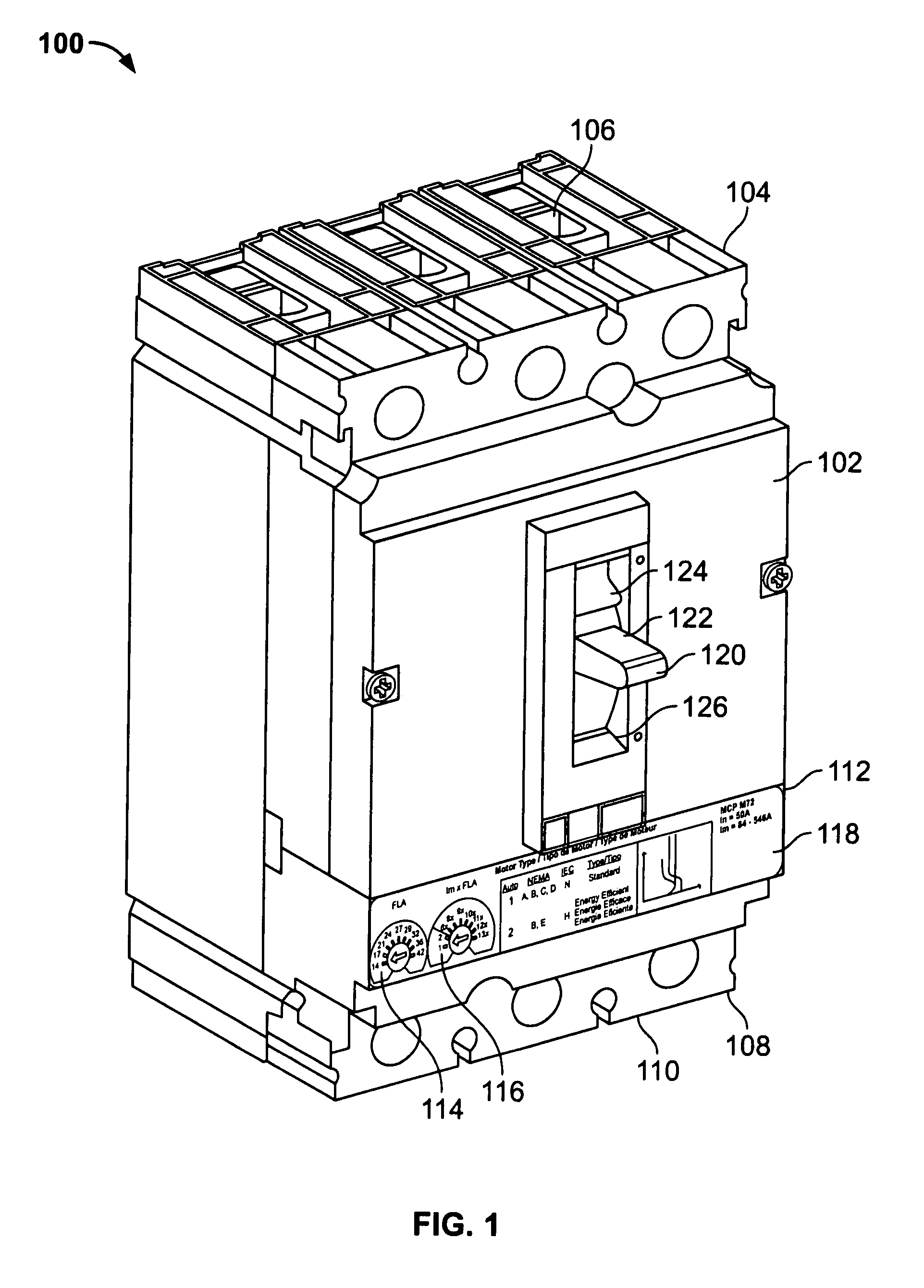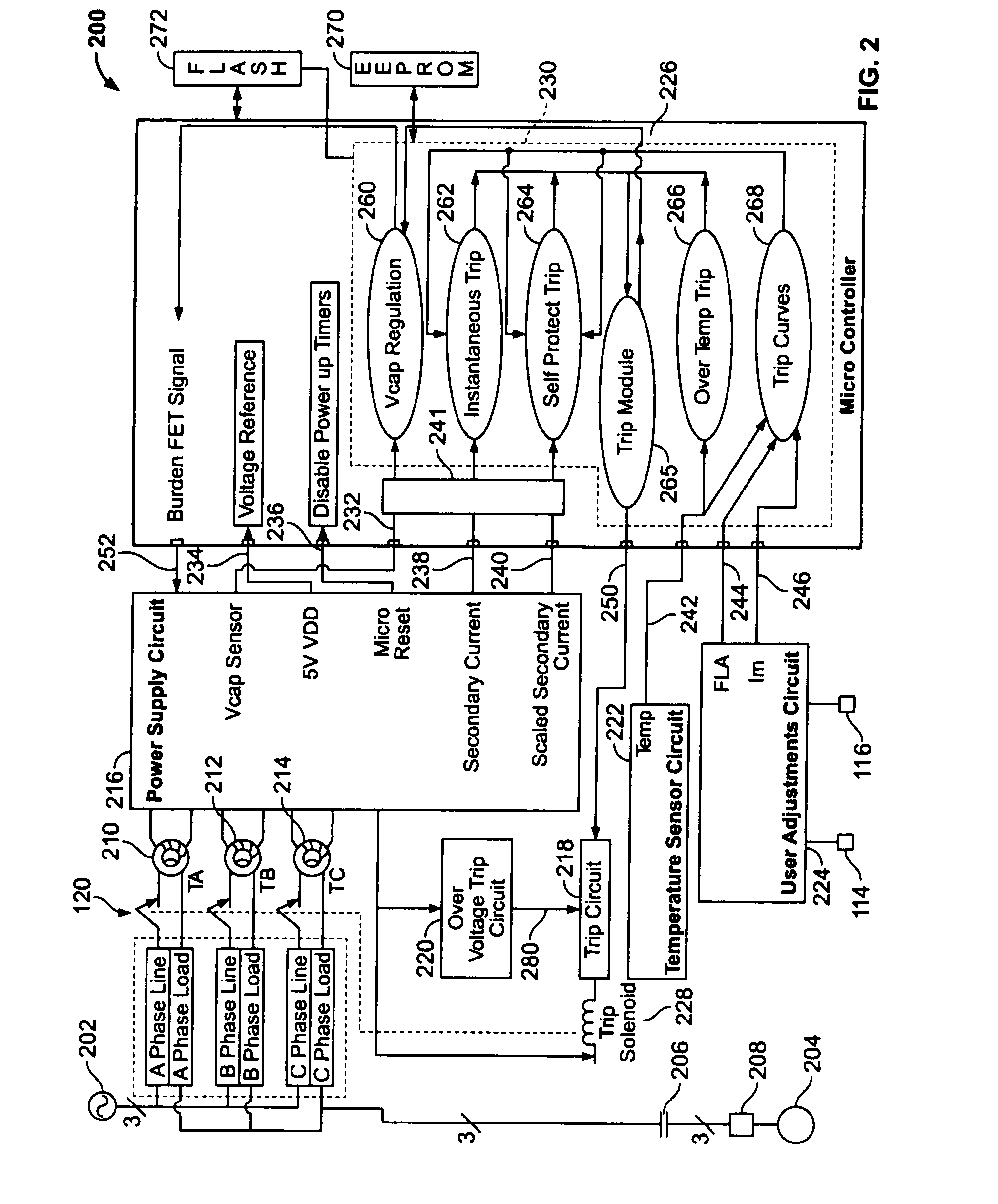Burden resistor temperature compensation algorithm
a temperature compensation algorithm and resistor technology, applied in the field of temperature compensation algorithms, can solve problems such as power interruption to the load
- Summary
- Abstract
- Description
- Claims
- Application Information
AI Technical Summary
Benefits of technology
Problems solved by technology
Method used
Image
Examples
Embodiment Construction
[0026]Turning now to FIG. 1, an electronic motor circuit protector 100 is shown. The motor circuit protector 100 includes a durable housing 102 including a line end 104 having line terminals 106 and a load end 108 having load lugs or terminals 110. The line terminals 106 allow the motor circuit protector 100 to be coupled to a power source and the load terminals 110 allow the motor circuit protector 100 to be coupled to an electrical load such as a motor as part of a motor control center (“MCC”). In this example the motor circuit protector 100 includes a three-phase circuit breaker with three poles, although the concepts described below may be used with circuit protectors with different numbers of poles, including a single pole.
[0027]The motor circuit protector 100 includes a control panel 112 with a full load ampere (“FLA”) dial 114 and an instantaneous trip point (“Im”) dial 116 which allows the user to configure the motor circuit protector 100 for a particular type of motor to be...
PUM
 Login to View More
Login to View More Abstract
Description
Claims
Application Information
 Login to View More
Login to View More - R&D
- Intellectual Property
- Life Sciences
- Materials
- Tech Scout
- Unparalleled Data Quality
- Higher Quality Content
- 60% Fewer Hallucinations
Browse by: Latest US Patents, China's latest patents, Technical Efficacy Thesaurus, Application Domain, Technology Topic, Popular Technical Reports.
© 2025 PatSnap. All rights reserved.Legal|Privacy policy|Modern Slavery Act Transparency Statement|Sitemap|About US| Contact US: help@patsnap.com



